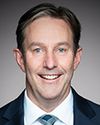Thank you, Mr. Chair.
I want to thank all of you for being here, and the people in the audience as well. I commend them for being here.
Part of my discussion and my concern is that there are people watching. There are women watching this conversation, and they are concerned. They are very concerned about what's going on, about themselves and about the future for women in this country. It's great to hear many different aspects of this. I recognize the challenges we've had. I've been all over the map with questions I want to ask.
Ultimately, I recognize the challenges we have in doing RCTs in this subject area and the potential that could be there in someone designing that. Dr. Wilkinson, your comments about working with patients, I think, are tremendous, and dealing with women and understanding that.
In my years of practice.... I'm from a rural part of Canada, where I had many women come to me with signs and symptoms that were outside my scope of practice. They came to me because they realized that I would at least refer them to where I felt it was appropriate, to at least be assessed. My home is 14 miles from North Dakota. In North Dakota, they basically have 18-wheelers with mammography units, and they travel all over the state to do testing.
When I see recommendations from the U.S., where they recommend biannual testing for women between 40 and 74, I see that as a concern as to the research and the science they would have used to get that.
Dr. Wilkinson, what are your thoughts on that? If they had some research to support that, why don't we?




